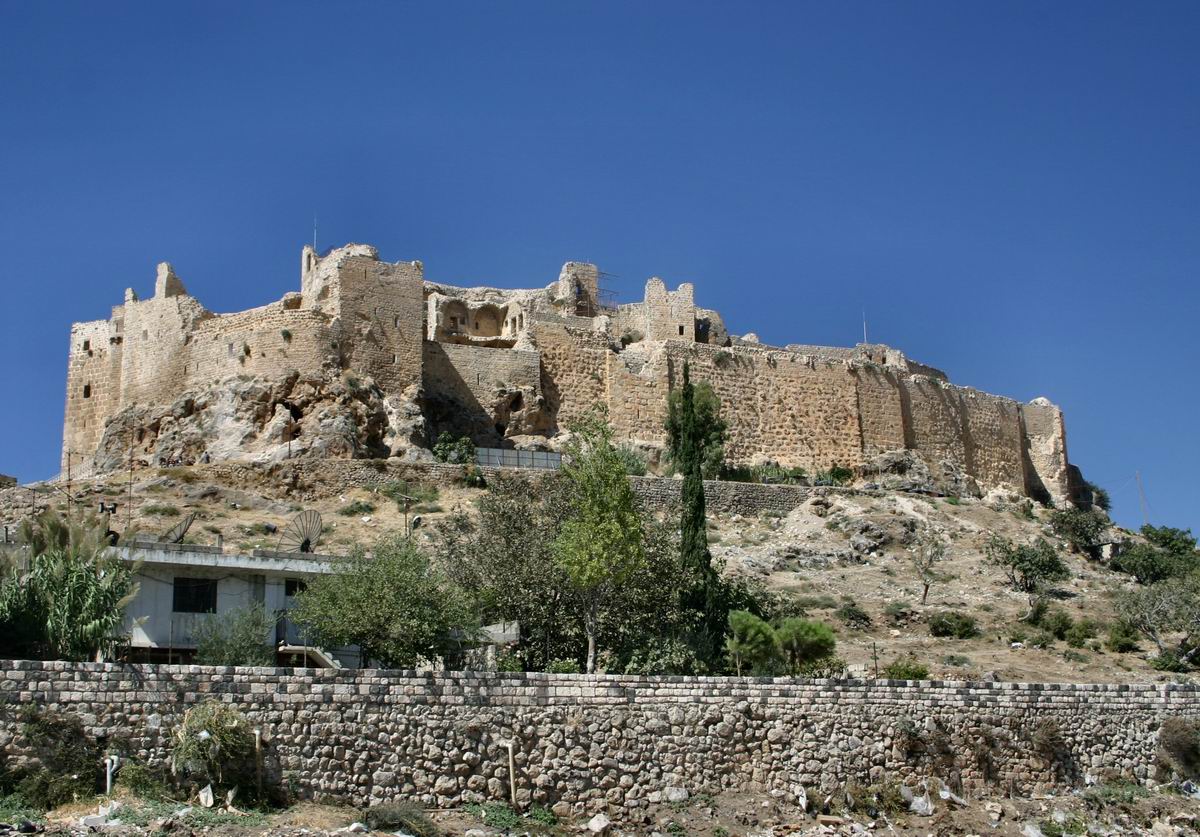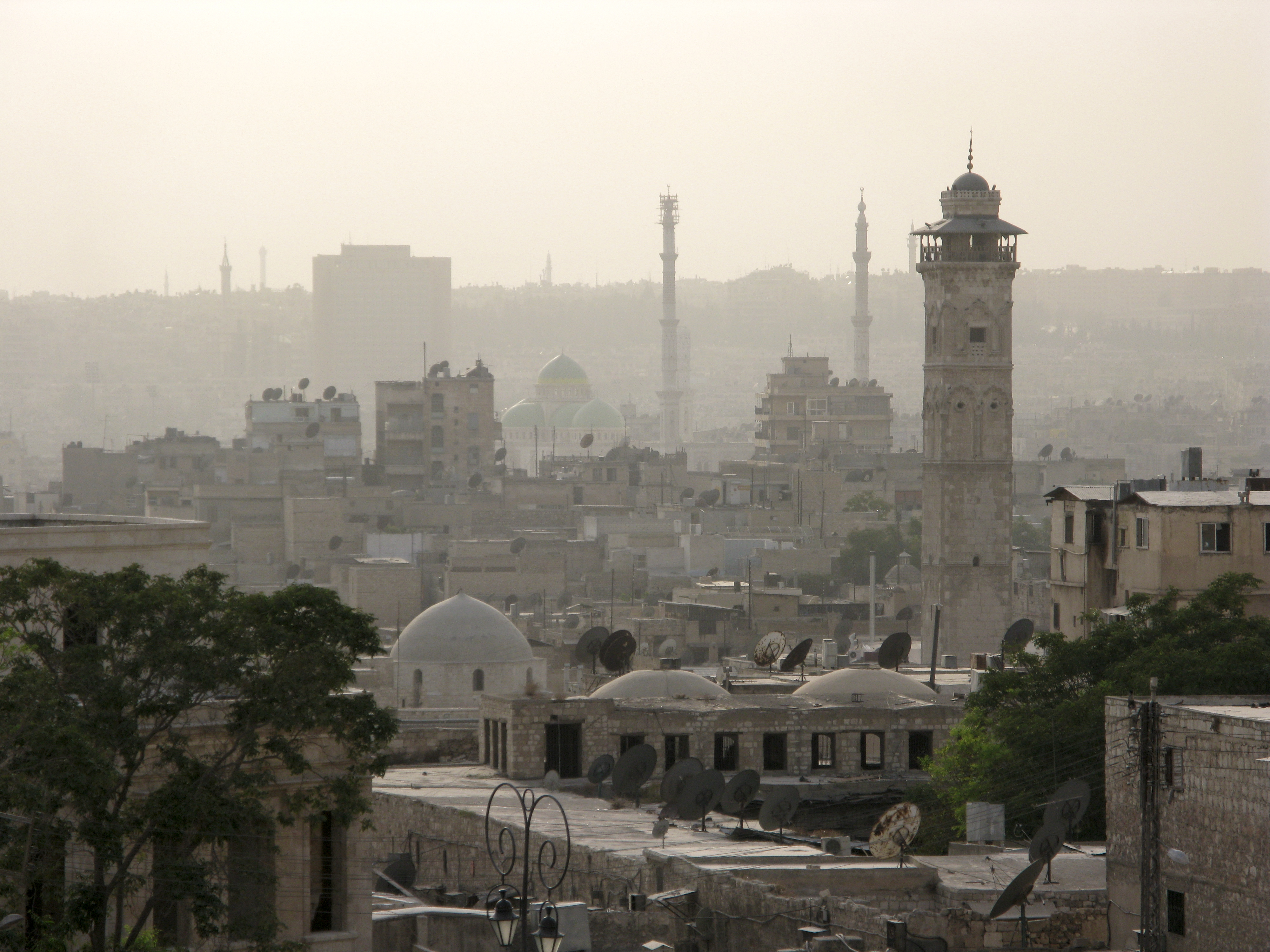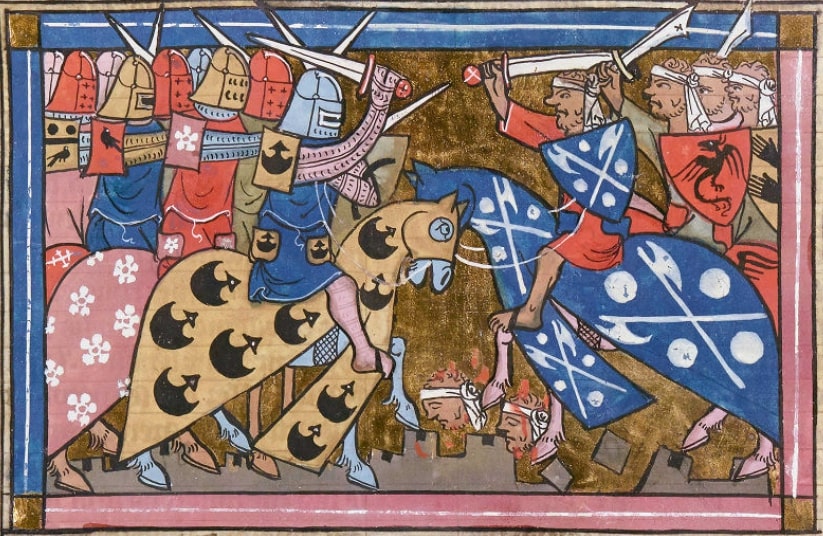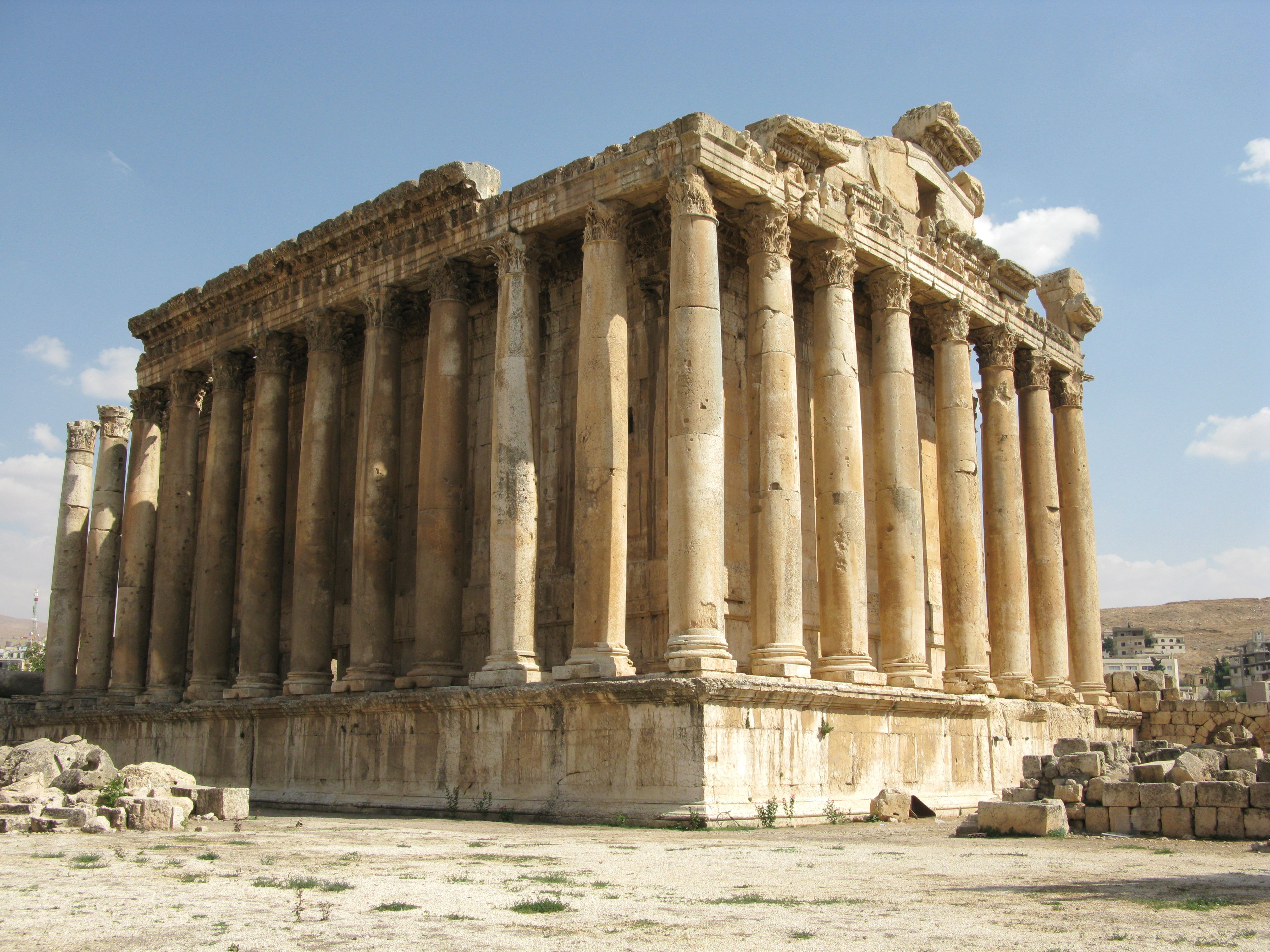|
Masyaf
Masyaf ( ar, مصياف ') is a city in northwestern Syria. It is the center of the Masyaf District in the Hama Governorate. As of 2004, Masyaf had a religiously diverse population of approximately 22,000 Ismailis, Alawites and Christians. The city is well known for its large medieval castle, particularly its role as the headquarters of the Nizari Ismailis and their elite Assassins unit. Etymology Throughout the Islamic era and until the modern day, the Arabic name of the city was pronounced in a number of different ways by the inhabitants of the region as ''Maṣyaf'', ''Maṣyat'' or ''Maṣyad''. The Arabic name is a local pronunciation that evolved from the Assyrian name ''Manṣuate''. The "nṣw" in ''Manṣuate'' correlates with the Arabic "nṣṣ", which means "to set up", according to orientalist scholar Edward Lipinsky. Moreover, Lipinsky suggests that the Assyrian name was likely a configuration of the Assyrian word ''manṣuwatu'' which correlates with the Arabi ... [...More Info...] [...Related Items...] OR: [Wikipedia] [Google] [Baidu] |
Masyaf Castle
Masyaf Castle ( ar, قلعة مصياف), also Masyaf Castle, is a medieval structure in the town of Masyaf in Hama Governorate, Syria, situated in the Orontes Valley, approximately 40.03 kilometres to the west of Hama. It served to protect the approach to other Ismaili castles in the Syrian Coastal Mountain Range (Jabal Ansariya) at a site controlling the trade routes to cities further inland such as Banyas. The castle itself stands on a platform about 20 metres above the surrounding plain. It became famous as the stronghold from which Rashid ad-Din Sinan, known as the Old Man of the Mountain, ruled from 1166-1193. He was a leader of the Syrian branch of the Shia Nizari Isma'ili sect, also known as the Assassins, and a figure in the history of the Crusades. History Evidence suggests that the lower layers and foundations of the castle are of Byzantine origin. Later levels were added by the Nizari Shia Isma'ilis, Mamluks, and Ottomans, with most of the current remains dating bac ... [...More Info...] [...Related Items...] OR: [Wikipedia] [Google] [Baidu] |
List Of Sovereign States
The following is a list providing an overview of sovereign states around the world with information on their status and recognition of their sovereignty. The 206 listed states can be divided into three categories based on membership within the United Nations System: 193 member states of the United Nations, UN member states, 2 United Nations General Assembly observers#Present non-member observers, UN General Assembly non-member observer states, and 11 other states. The ''sovereignty dispute'' column indicates states having undisputed sovereignty (188 states, of which there are 187 UN member states and 1 UN General Assembly non-member observer state), states having disputed sovereignty (16 states, of which there are 6 UN member states, 1 UN General Assembly non-member observer state, and 9 de facto states), and states having a political status of the Cook Islands and Niue, special political status (2 states, both in associated state, free association with New Zealand). Compi ... [...More Info...] [...Related Items...] OR: [Wikipedia] [Google] [Baidu] |
Aramean
The Arameans ( oar, 𐤀𐤓𐤌𐤉𐤀; arc, 𐡀𐡓𐡌𐡉𐡀; syc, ܐܪ̈ܡܝܐ, Ārāmāyē) were an ancient Semitic-speaking people in the Near East, first recorded in historical sources from the late 12th century BCE. The Aramean homeland was known as the land of Aram and encompassed central regions of modern Syria. At the beginning of the 1st millennium BCE, a number of Aramean states were established throughout the western regions of the ancient Near East. The most notable was the Kingdom of Aram-Damascus, which reached its height in the second half of the 9th century BCE during the reign of king Hazael. A distinctive Aramaic alphabet was developed and used to write the Old Aramaic language. During the 8th century BCE, local Aramean kingdoms were gradually conquered by the Neo-Assyrian Empire. The policy of population displacement and relocation that was applied throughout Assyrian domains also affected Arameans, many of whom were resettled by Assyrian auth ... [...More Info...] [...Related Items...] OR: [Wikipedia] [Google] [Baidu] |
Seljuk Dynasty
The Seljuk dynasty, or Seljukids ( ; fa, سلجوقیان ''Saljuqian'', alternatively spelled as Seljuqs or Saljuqs), also known as Seljuk Turks, Seljuk Turkomans "The defeat in August 1071 of the Byzantine emperor Romanos Diogenes by the Turkomans at the battle of Malazgirt (Manzikert) is taken as a turning point in the history of Anatolia and the Byzantine Empire. or the Saljuqids, was an Oghuz Turkic, Sunni Muslim dynasty that gradually became Persianate and contributed to the Turco-Persian tradition in the medieval Middle East and Central Asia. The Seljuks established the Seljuk Empire (1037-1194), the Sultanate of Kermân (1041-1186) and the Sultanate of Rum (1074-1308), which at their heights stretched from Iran to Anatolia, and were the prime targets of the First Crusade. Early history The Seljuks originated from the Kinik branch of the Oghuz Turks, who in the 8th century lived on the periphery of the Muslim world, north of the Caspian Sea and Aral Sea in their Ogh ... [...More Info...] [...Related Items...] OR: [Wikipedia] [Google] [Baidu] |
Antioch
Antioch on the Orontes (; grc-gre, Ἀντιόχεια ἡ ἐπὶ Ὀρόντου, ''Antiókheia hē epì Oróntou'', Learned ; also Syrian Antioch) grc-koi, Ἀντιόχεια ἡ ἐπὶ Ὀρόντου; or Ἀντιόχεια ἡ ἐπὶ Δάφνῃ "Antioch on Daphne"; or "Antioch the Great"; la, Antiochia ad Orontem; hy, Անտիոք ''Antiokʽ''; syr, ܐܢܛܝܘܟܝܐ ''Anṭiokya''; he, אנטיוכיה, ''Anṭiyokhya''; ar, أنطاكية, ''Anṭākiya''; fa, انطاکیه; tr, Antakya. was a Hellenistic, and later, a Biblical Christian city, founded by Seleucus I Nicator in 300 BC. This city served as the capital of the Seleucid Empire and later as regional capital to both the Roman and Byzantine Empire. During the Crusades, Antioch served as the capital of the Principality of Antioch, one of four Crusader states that were founded in the Levant. Its inhabitants were known as ''Antiochenes''; the city's ruin lies on the Orontes River, near Antakya, t ... [...More Info...] [...Related Items...] OR: [Wikipedia] [Google] [Baidu] |
Basil II
Basil II Porphyrogenitus ( gr, Βασίλειος Πορφυρογέννητος ;) and, most often, the Purple-born ( gr, ὁ πορφυρογέννητος, translit=ho porphyrogennetos).. 958 – 15 December 1025), nicknamed the Bulgar Slayer ( gr, ὁ Βουλγαροκτόνος, ),). and believe the epithet to have entered common usage among the Byzantines at the end of the 12th century, when the Second Bulgarian Empire broke away from Byzantine rule and Basil's martial exploits became a theme of Imperial propaganda. It was used by the historian Niketas Choniates and the writer Nicholas Mesarites, and consciously inverted by the Bulgarian ruler Kaloyan, who called himself "Roman-slayer" ( gr, Ρωμαιοκτόνος, translit=Rhomaioktonos). was the senior Byzantine emperor from 976 to 1025. He and his brother Constantine VIII were crowned before their father Romanos II died in 963, but they were too young to rule. The throne thus went to two generals, Nikep ... [...More Info...] [...Related Items...] OR: [Wikipedia] [Google] [Baidu] |
Fatimid Caliphate
The Fatimid Caliphate was an Ismaili Shi'a caliphate extant from the tenth to the twelfth centuries AD. Spanning a large area of North Africa, it ranged from the Atlantic Ocean in the west to the Red Sea in the east. The Fatimids, a dynasty of Arab origin, trace their ancestry to Muhammad's daughter Fatima and her husband ‘Ali b. Abi Talib, the first Shi‘a imam. The Fatimids were acknowledged as the rightful imams by different Isma‘ili communities, but also in many other Muslim lands, including Persia and the adjacent regions. Originating during the Abbasid Caliphate, the Fatimids conquered Tunisia and established the city of "Mahdia, al-Mahdiyya" ( ar, المهدية). The Ismaili dynasty ruled territories across the Mediterranean coast of Africa and ultimately made Egypt the center of the caliphate. At its height, the caliphate included – in addition to Egypt – varying areas of the Maghreb, Sudan, Sicily, the Levant, and the Hijaz. Between 902 to 909 th ... [...More Info...] [...Related Items...] OR: [Wikipedia] [Google] [Baidu] |
Jund Qinnasrin
''Jund Qinnasrīn'' ( ar, جُـنْـد قِـنَّـسْـرِيْـن, " military district of Qinnasrin") was one of five sub-provinces of Syria under the Umayyad and Abbasid Caliphates, organized soon after the Muslim conquest of Syria in the 7th century CE. Initially, its capital was Qinnasrin, but as the city declined in population and wealth, the capital was moved to Aleppo. By 985, the district's principal towns were Manbij, Alexandretta, Hama, Shaizar, Ma'arrat al-Nu'man, Samosata, Jusiya, Wadi Butnan, Rafaniyya, Lajjun, Mar'ash, Qinnasrin, al-Tinat (possibly ancient Issus), Balis, and Suwaydiyya. History Originally a part of Jund Hims, the first Umayyad caliph Mu'awiya I established the Jund Qinnasrin when he defeated Hasan ibn Ali, and subsequently detached the people of that area from their allegiance to him. 9th century Muslim historian al-Biladhuri says, however, that it was Muawiya's successor Yazid I who founded the district after separating nor ... [...More Info...] [...Related Items...] OR: [Wikipedia] [Google] [Baidu] |
Hamdanid Dynasty
The Hamdanid dynasty ( ar, الحمدانيون, al-Ḥamdāniyyūn) was a Twelver Shia Arab dynasty of Northern Mesopotamia and Syria (890–1004). They descended from the ancient Banu Taghlib Christian tribe of Mesopotamia and Eastern Arabia. History The Hamdanid dynasty was founded by Hamdan ibn Hamdun. By 892–893, he was in possession of Mardin, after fighting the Kharijites of the Jazira. In 895, Caliph al-Mutadid invaded and Hamdan fled Mardin. Hamdan's son, Husayn, who was at Ardumusht, joined the caliph's forces. Hamdan later surrendered to the caliph and was imprisoned. In December 908, Husayn conspired to establish Ibn al-Mu'tazz as Caliph. Having failed, Husayn fled until he asked for mediation through his brother Ibrahim. Upon his return, he was made governor of Diyar Rabi'a. In 916, Husayn, due to a disagreement with vizier Ali b. Isa, revolted, was captured, imprisoned, and executed in 918. Hamdan's other son, Abdallah, was made governor of Mosul ... [...More Info...] [...Related Items...] OR: [Wikipedia] [Google] [Baidu] |
Aleppo
)), is an adjective which means "white-colored mixed with black". , motto = , image_map = , mapsize = , map_caption = , image_map1 = , mapsize1 = , map_caption1 = , pushpin_map = Syria#Mediterranean east#Asia#Syria Aleppo , pushpin_label_position = left , pushpin_relief = yes , pushpin_mapsize = , pushpin_map_caption = Location of Aleppo in Syria , coordinates = , subdivision_type = Country , subdivision_name = , subdivision_type1 = Governorate , subdivision_type2 = District , subdivision_type3 = Subdistrict , subdivision_name1 = Aleppo Governorate , subdivision_name2 = Mount Simeon (Jabal Semaan) , subdivision_name3 = Mount Simeon ... [...More Info...] [...Related Items...] OR: [Wikipedia] [Google] [Baidu] |
Crusades
The Crusades were a series of religious wars initiated, supported, and sometimes directed by the Latin Church in the medieval period. The best known of these Crusades are those to the Holy Land in the period between 1095 and 1291 that were intended to recover Jerusalem and its surrounding area from Islamic rule. Beginning with the First Crusade, which resulted in the recovery of Jerusalem in 1099, dozens of Crusades were fought, providing a focal point of European history for centuries. In 1095, Pope Urban II proclaimed the First Crusade at the Council of Clermont. He encouraged military support for Byzantine emperor AlexiosI against the Seljuk Turks and called for an armed pilgrimage to Jerusalem. Across all social strata in western Europe, there was an enthusiastic response. The first Crusaders had a variety of motivations, including religious salvation, satisfying feudal obligations, opportunities for renown, and economic or political advantage. Later crusades were ... [...More Info...] [...Related Items...] OR: [Wikipedia] [Google] [Baidu] |
Beqaa Valley
The Beqaa Valley ( ar, links=no, وادي البقاع, ', Lebanese ), also transliterated as Bekaa, Biqâ, and Becaa and known in classical antiquity as Coele-Syria, is a fertile valley in eastern Lebanon. It is Lebanon's most important farming region. Industry also flourishes in Beqaa, especially that related to agriculture. The Beqaa is located about east of Beirut. The valley is situated between Mount Lebanon to the west and the Anti-Lebanon Mountains to the east. It forms the northeasternmost extension of the Great Rift Valley, which stretches from Syria to the Red Sea. Beqaa Valley is long and wide on average. It has a Mediterranean climate of wet, often snowy winters and dry, warm summers. The region receives limited rainfall, particularly in the north, because Mount Lebanon creates a rain shadow that blocks precipitation coming from the sea. The northern section has an average annual rainfall of , compared to in the central valley. Nevertheless, two riv ... [...More Info...] [...Related Items...] OR: [Wikipedia] [Google] [Baidu] |








